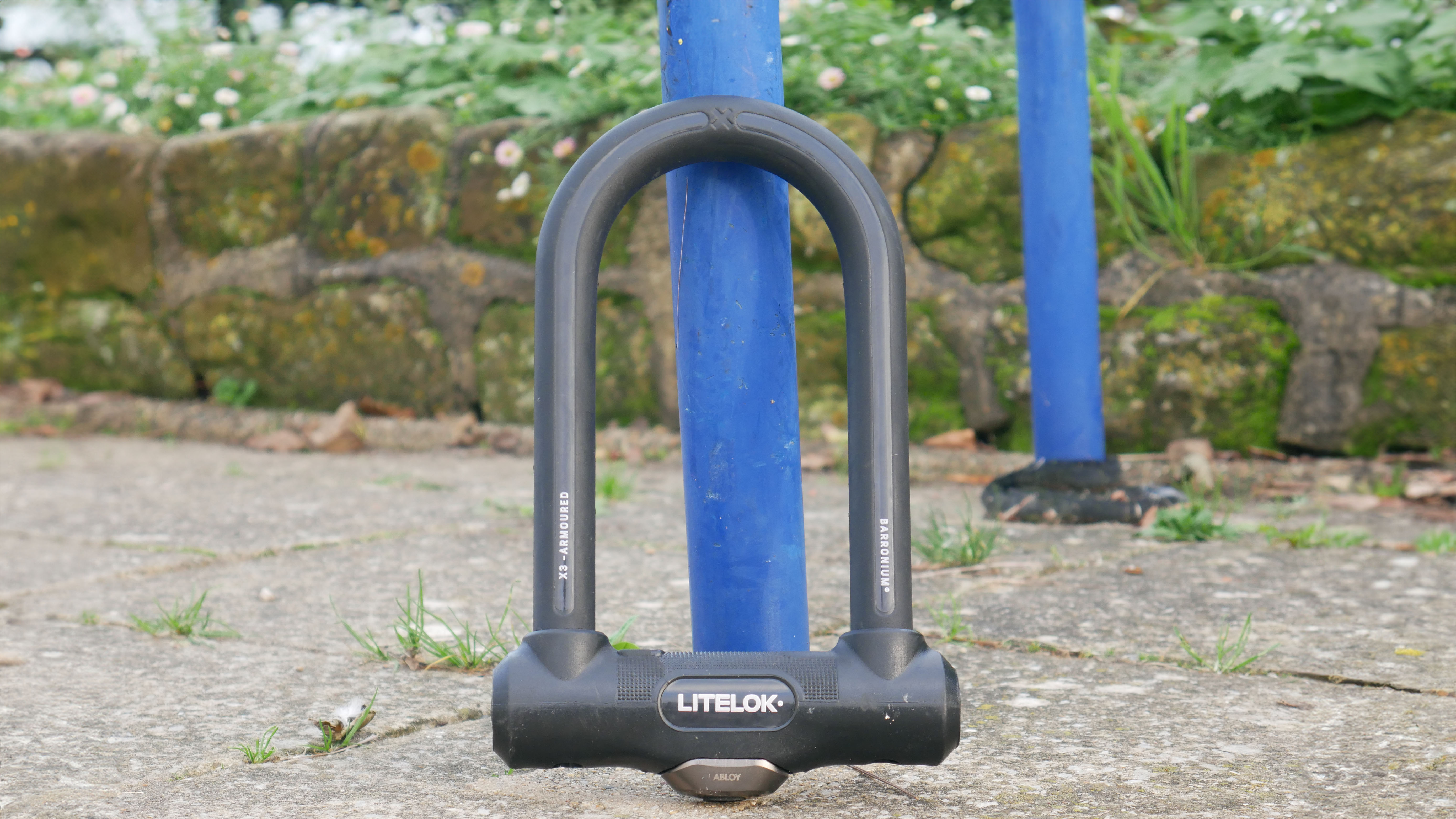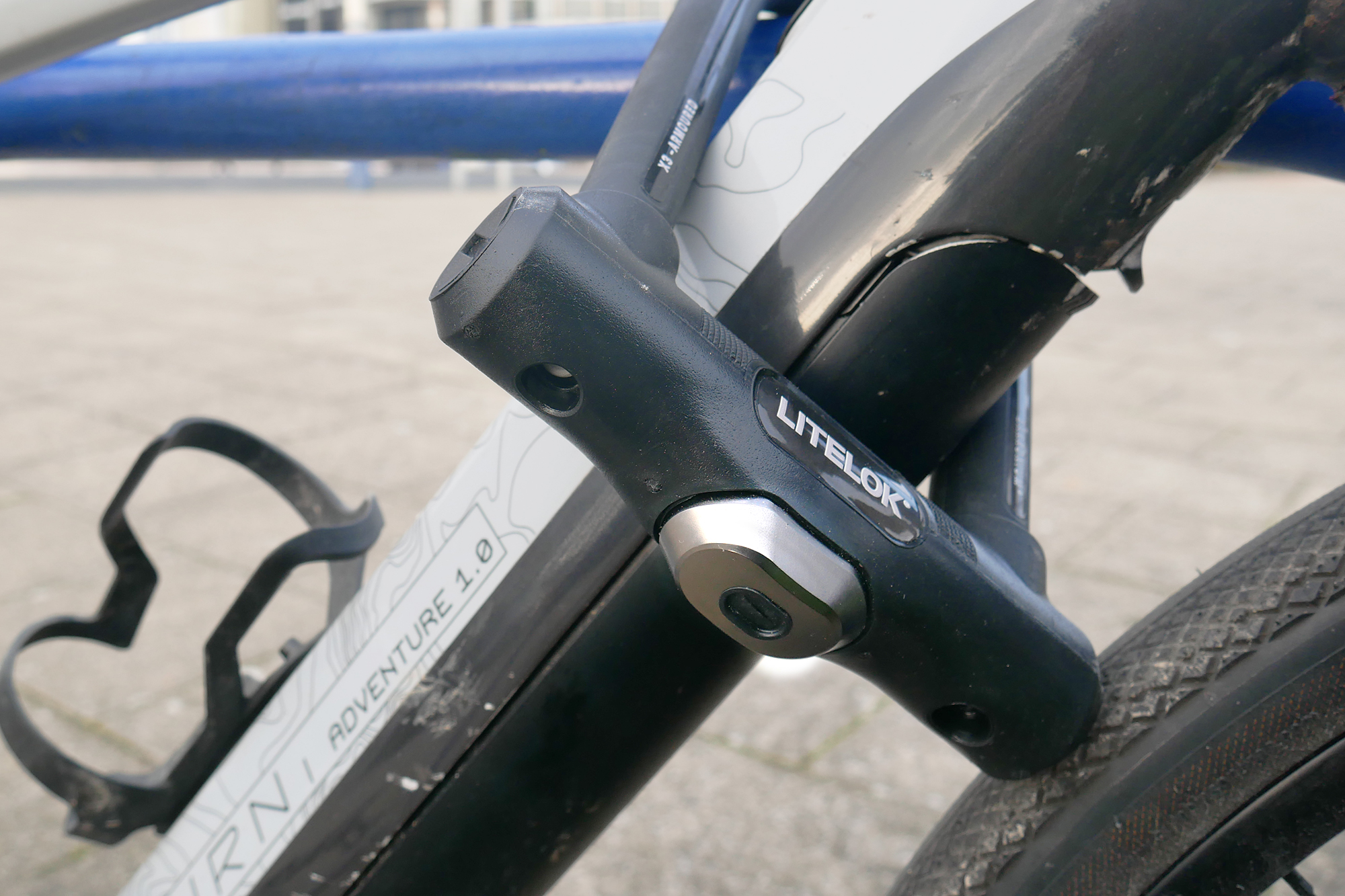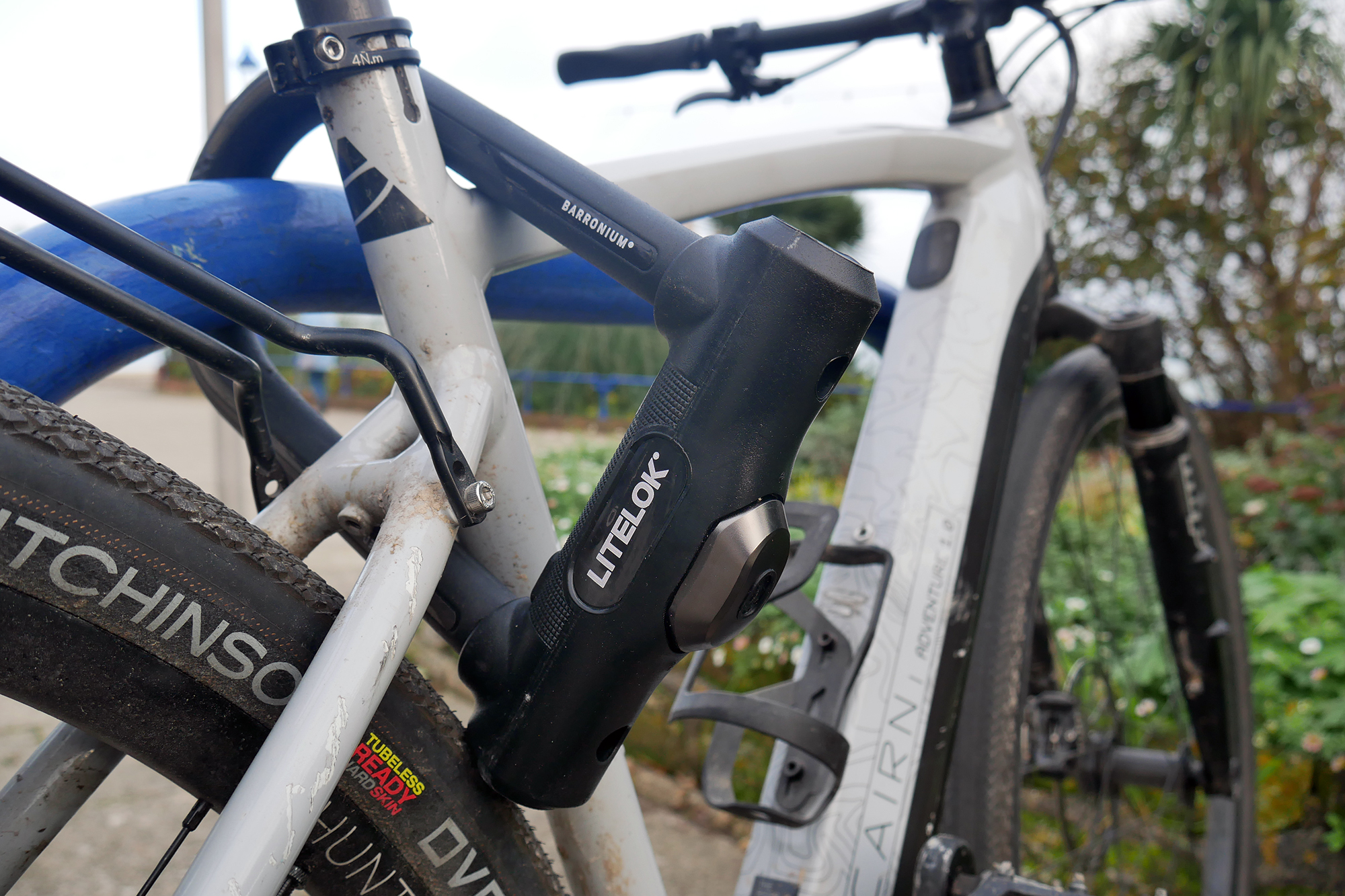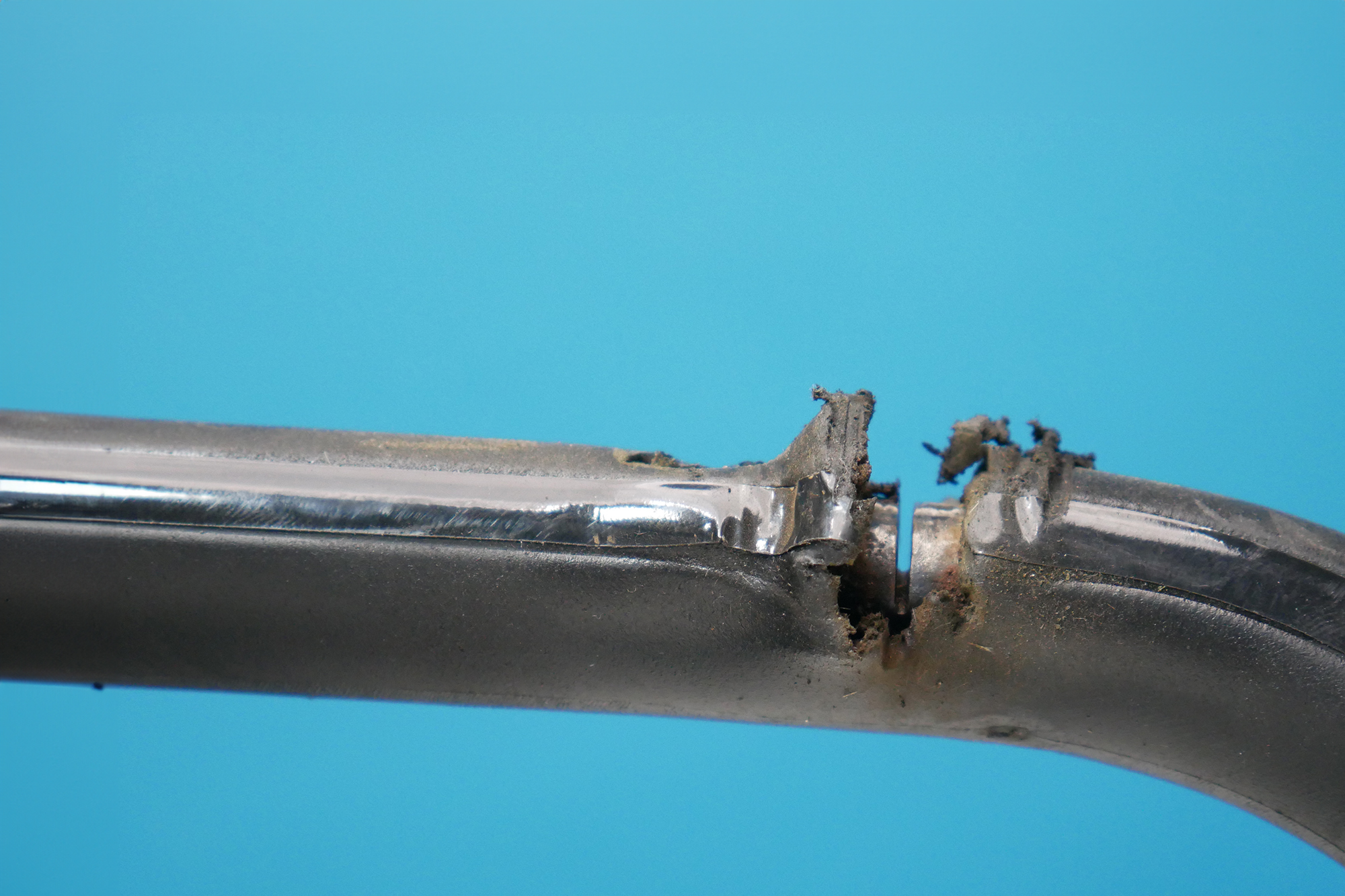Litelok X3 bike lock review: an exceptionally well-rounded angle grinder-resistant lock that perfectly balances weight, reach and security
Boasting additional reach and features over its main rival, the OnGuard RockSolid, the X3 presents superb value

The Litelok offers an outstanding balance of reach, weight, and overall cost and was only beaten by the OnGuard RockSoild Overall. Bonus features like the neoprene sleeve sweeten the deal and make the X3 exceptional value.
-
+
Passed our angle grinder test
-
+
Good balance of reach and weight
-
+
The Neoprene Sleeve is a welcome additional feature
-
+
Descent weatherproofing around the lock barrel
-
-
Fiddly key engagement
-
-
Frame mount is an additional cost and won’t fit on smaller frame sizes
-
-
$50/£50 more than the benchmark OnGuard RockSoild
You can trust Cycling Weekly.
The Litelok X3 is an angle grinder-resistant bike lock with an enviable pedigree. The brand was a pioneer of this technology, launching the X1, our outgoing best bike lock, just over two years ago. From its inception, the X1 prompted a significant revolution in bicycle lock technology, a drive towards enhanced security that Onguard, Abus, and Hiplock have also adopted. The result was a collection of new products that we at Cycling Weekly have been excited to test rigorously.
Two years on, the Litelok X1's five-time resistance to angle grinders is no longer as competitive as it was. Enter the Litelok X3, which boasts a claimed twenty times more resistance than the best-selling U-locks and is rated Sold Secure Diamond for bicycles and e-bikes.
Construction
This additional security of the X3 is achieved using a high volume of Litelok’s proprietary material, Barronium. Barronium is a fusion of hardened steel and composite materials that increases the X3's resistance to abrasion while upholding its strength against impacts, bending, and twisting. It's clever stuff, all developed collaboratively in the UK with the Swansea University School of Engineering.

The 'self-sealing silicone keyhole cover' should offer good weatherproofing
The result is an imposing-looking bicycle lock that weighs in at 2.2kg/4.8 lbs and offers a locking area of 195cm2/30.4 inches2, or 19.5cm/7.6 inches tall by 10cm/4 Inches at its widest. The Litelok X3 sits in the middle of our five locks on test, being the third lightest and offering the third largest locking area.
The X3’s use of an Abloy lock barrel (the world's largest lock manufacturer) means that key replacements should be available long into the future. Hopefully, that shouldn't be an issue anyway because Litelok provides three keys with every lock. Finer details like the silicone lock cover and neoprene sleeve for storage help the X3 stand out from the crowd. While it isn’t supplied with a mount, the Litelok Tactical Mount can be purchased at an additional cost.
Specification
Weight | 2.2kg / 4.8lbs |
Number of Keys | 3 |
Sold Secure rating | Diamond |
Reach | 19.5cm/7.6 inches x 10cm/4 Inches |
Locking Area | 195cm/30.4 Inches |
Frame Mount | Yes (tactical mount is an additional purchase) |
In Use
As expected from a premium lock, the Litelok X3 feels sturdy and robust, an impression reinforced by the minimal play between the shackle and the locking mechanism. Its soft, plant-based, eco-rubber coating enhances its tactile quality, providing a non-stick surface and decent frame protection.
Litelok extends the use of soft materials to the lock barrel cover, which they refer to as the ‘self-sealing silicone keyhole cover’. However, I’m not entirely clear on what they mean by ‘self-sealing’. It's more akin to those plastic flaps on walk-in freezers. While it does an excellent job of keeping the elements out, it obstructs the view when locating the key in the slot. The key must be inserted quite deep, making it cumbersome to engage the lock when bending over awkwardly at a bike rack. Nevertheless, once the key is fully in place, the lock operates smoothly and feels well constructed, accompanied by a reassuring clunk that indicates it's unlocked.

The reach of the X3 was never an issue, even securing around my e-bike's downtube
My only minor issue pertains not to the X3’s function but to the Litelok Tactical Mount, which attaches the X3 to your frame during transport. Firstly, this Tactical Mount costs an additional £20/$25, and, what’s more, the mount is overly large, so I couldn’t fit it to either my e-bike or gravel bike. Admittedly, they are both small-frame bikes, but still.
Despite this, the X3 was brilliant and worked exceptionally well throughout testing. I absolutely loved the Neoprene sleeve provided with the lock. It kept dirt out of my bag and stored small items, like my gloves and glasses, making them easy to find.
The Angle Grinder Test
Similar to my experience with other angle grinder locks, such as the offerings from Hiplok and Abus, I could only cut into the X3 a small way during my five-minute test using a high-powered angle grinder. In that time, I burned through two discs and cut a third of the way through the lock.
What ultimately secured the X3's third place in the angle grinder test, behind the Hiplok and OnGuard, was while the Barronium Steel was abrasive enough to wear down the discs, I could continue cutting - albeit slowly. This differed from the Hiplok, which, once you reached the core material of the lock shackle, caused the grinder to kick back, halting further progress. In contrast, the OnGuard barely showed any signs of being attacked by an angle grinder.
While these are minor differences in performance, for the sake of argument, if I had the time to keep cutting and had several spare discs, I would likely have eventually got through. In reality, most thieves wouldn't have this opportunity, and the Litelok performed admirably.


Value and conclusions
If not for the exceptional performance of the OnGuard RockSoild in the angle grinder tests, the Litelok might have easily secured the top position. Although there is a minor difference of £50/$50 between them, the extra reach and features diminish this disparity for those who need them.
The extra expense of the Tactical Mount puts the X3 in line with the Abus Granit Super Extreme, which is £270/$320 and features a far better rack mounting system. Nevertheless, its performance in the angle grinder test and overall quality surpass any concern about competition from Abus and Hiplok.
How I tested this lock
After spending many hours lost in a YouTube black hole, my research indicated that opportunistic bike thieves generally have less than a minute to steal a bike. In theory, making the five minutes I allotted for our test appear generous.
To remove a bike lock using an angle grinder, you can either make two precise cuts—one on the shackle and another on the lock barrel—or make one cut on the shackle and then twist the lock. Since most locks today have anti-twist and tamper-resistant features, I would probably opt for making two precise cuts.
This is why other tests I have encountered do not reflect real-world scenarios. If you extrapolate my testing results, you will likely need 5-10 angle grinder discs and around 20 minutes to remove one of these locks. So, I wanted to learn whether bike locks claiming angle grinder resistance failed in a more real-world time scale.
Using a high-powered battery-operated angle grinder fitted with high-quality metal-specific cutting discs, I allowed myself a maximum of five minutes. This would account for any disc changes required and be more representative of the time a thief could have in a low-foot traffic area or if they had broken into a shed or garage.
I started like so many at the age of 13, doing a paper round by bike before consistently using one to commute until I got a driving licence at 17. It didn't stop there. In 20 years of cycling, with 15 of those in the bicycle industry, I am lucky to have never had a bike stolen, or maybe I know how to secure a bike.

Thank you for reading 20 articles this month* Join now for unlimited access
Enjoy your first month for just £1 / $1 / €1
*Read 5 free articles per month without a subscription

Join now for unlimited access
Try first month for just £1 / $1 / €1
Get The Leadout Newsletter
The latest race content, interviews, features, reviews and expert buying guides, direct to your inbox!
Like many, Matt began his bicycle industry journey on the spanners at his local bike shop. After spending his youth mountain biking, he was inspired to embrace gravel during his tenure with Evans Cycles' in-house brands, Pinnacle and Hoy Bikes. Recognising the evolving industry, Matt eagerly seized the chance to become an E-bike designer, winning several awards with the E-bike brand Cairn Cycles.
These days, Matt is likely to have a toddler sitting shotgun or off the beaten track somewhere on the South Downs.
You must confirm your public display name before commenting
Please logout and then login again, you will then be prompted to enter your display name.
-
 'It took everything' - Puck Pieterse outclimbs Demi Vollering to win La Flèche Wallonne
'It took everything' - Puck Pieterse outclimbs Demi Vollering to win La Flèche WallonneDutch 22-year-old shows Classics pedigree with first one-day victory
By Tom Davidson Published
-
 Tadej Pogačar flies to dominant victory at La Flèche Wallonne
Tadej Pogačar flies to dominant victory at La Flèche WallonneSlovenian takes second win at Belgian classic ahead of Kévin Vauquelin and Tom Pidcock
By Tom Thewlis Published
-
 Colombian climbing star and former Vuelta a España winner Lucho Hererra could be investigated over murders of four people
Colombian climbing star and former Vuelta a España winner Lucho Hererra could be investigated over murders of four peopleA judge has called for an investigation into the former Vuelta winner who is alleged to have worked with paramilitary groups in Colombia
By Tom Thewlis Published